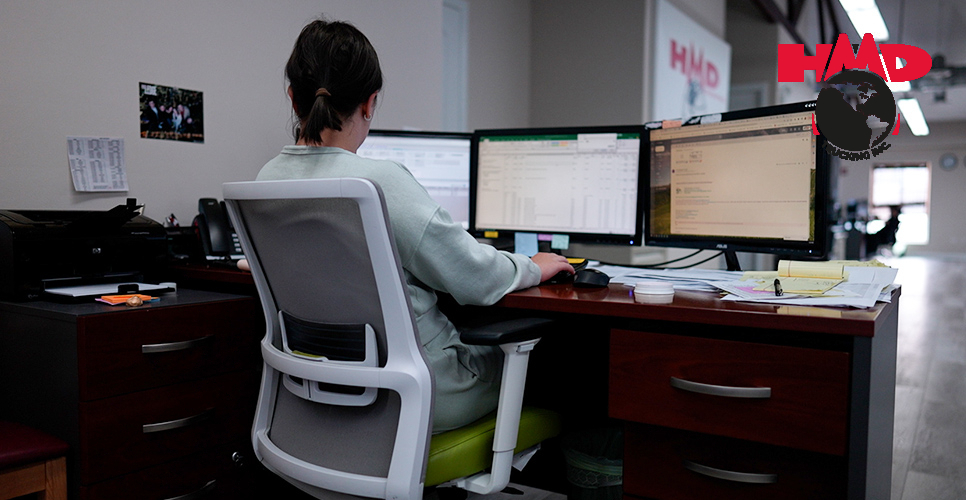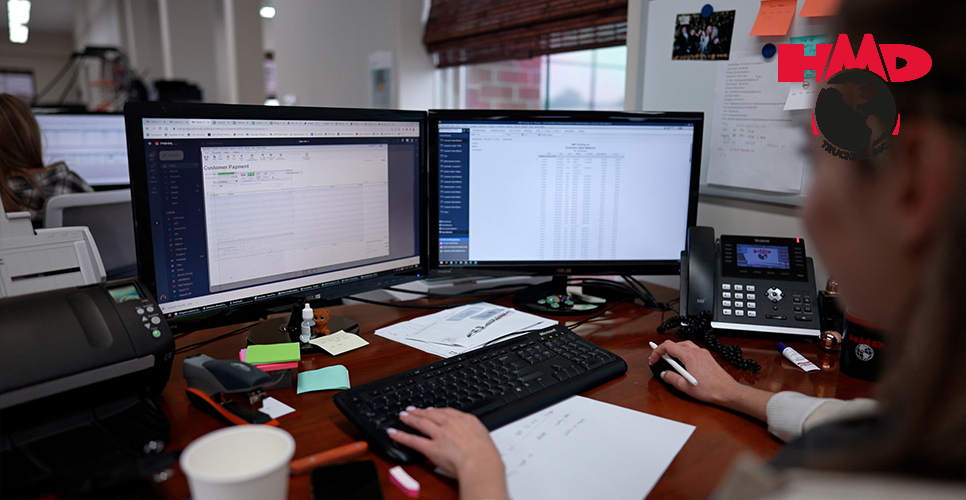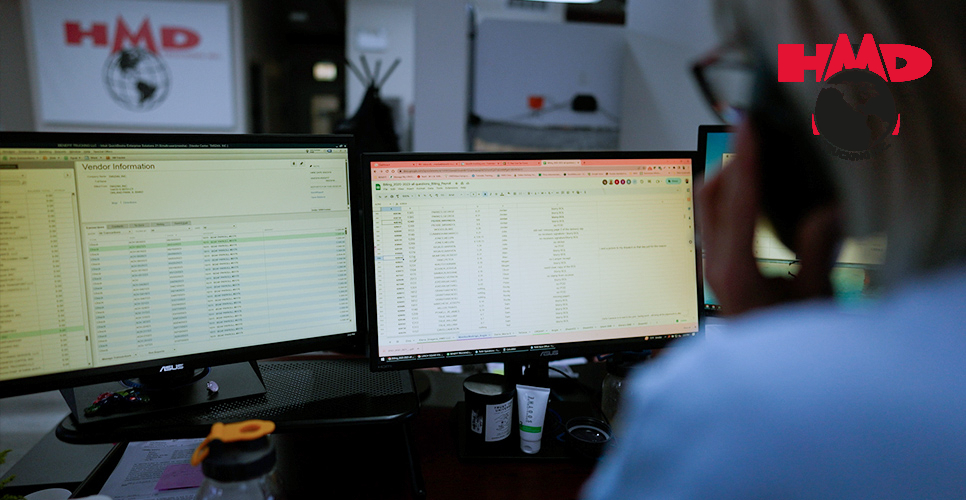Choosing the right financing tool is key to maintaining a trucking business success and growth.
The contemplation of whether to use factoring vs line of credit is a constant debate, as those are two very popular methods of financing. Some major differences that have to be properly understood. In this article, we will try to answer the question of “what is a line of credit?” and we’ll look at the differences of factoring vs line of credit, their pros and cons, so that you can make the best choice for your business.
Contents:
- What Is a Line of Credit?
- How Does a Business Line of Credit Work?
- Factoring
- Factoring vs Line of Credit
- Conclusion
What Is a Line of Credit?
A line of credit is a loan type, where a person can borrow a predetermined amount of cash for a fixed period. A lending institution, such as a bank, approves a line of credit for a client, providing a maximum credit limit and allowing this person or business to use the money to pay for goods, services or freight.

Pros and Cons of the Line of Credit
Advantages:
- Availability
One of the main advantages is availability. This is beneficial if you have a financial emergency or an urgent need, so you can access funds immediately.
- Fixed repayment
Another advantage is that you pay back only the amount of money you have used, not all that was approved and allocated.
- In addition to these, a line of credit allows businesses or individuals to build a favorable payment history that appears on the company's business credit report. This means less effort obtaining potential future credit and better creditworthiness.
However, this method of financing also has several potential disadvantages, which must be carefully weighed against the benefits.

Disadvantages:
- Strict repayment schedules
A line of credit typically has strict repayment schedules that may be difficult to keep up with. If you fall behind, the lender may charge late fees, which can cause a big financial headache.
- Psychological Factor
Another potential disadvantage of a line of credit is the users’ tendency to fall into an endless loop of borrowing and re-borrowing that can be difficult to escape. Interest can add up quickly, and taking on additional debt could put an even bigger financial strain on the individual or business. It is important to remember that, in many cases, a line of credit is not a "free" loan — even with lower interest rates, there are still potential consequences to consider.
- Increased interest rates
If you choose a line of credit without an option of putting down any collateral (such as a home or vehicle), you are not risking those assets, but it can lead to higher interest rates, making the line of credit a more costly choice and an unsecured financial method.
How Does a Business Line of Credit Work?
A line of credit can be used as an alternative to a traditional loan and provides flexibility in that it allows borrowers to draw on their funds as needed, as long as they stay within the total credit limit. Using a line of credit offers convenient access to funds at relatively low interest rates.
A trucking business line of credit works in much the same way as a traditional credit card or loan. It is a line of credit available to businesses, in which a bank provides a certain amount of funds that the business can draw on whenever needed. As the company draws funds from the line of credit, it must repay the borrowed amount in full, plus any accrued interest.
Any time a borrower requires money, it can be drawn from a line, and the available credit will be reduced. Once a remittance is paid, the available credit increases again.
Repayment terms are typically also very flexible, meaning more allowance to the borrowers to make interest-only payments during some periods or defer payments during the whole period of loan duration. This also makes it easier for borrowers to make a payment plan based on their individual circumstances.
These tools make it easier to manage longer-term financial needs, such as seasonal expenses, unexpected purchases, or investments in transportation.

Factoring
One of the most favorable financing options is factoring. It enables companies to sell their unpaid invoices in exchange for immediate cash to a third party vendor. Factoring is a financial option for contractors to get the cash they need to purchase materials or expand their business.
Factoring companies buy invoices and pay for them immediately, allowing contractors to have access to capital quickly. Factoring services are attractive to businesses because they can access the funds they need faster than traditional loans and offer flexible repayment terms.

Factoring vs Line of Credit
Let’s compare these two types of financing:
Providing Financial Information
You need to provide financial information about your customers to the factoring company for review before it chooses to fund the invoices to your company.
In the case of a trucking business line of credit, it is typically your company's payment history/credit and financial information that gets reviewed.
Cash Flow
Selling receivables to a factor makes factoring the easiest way to receive cash quickly. Factoring provides an immediate cash boost that can be used in contingency for new orders or capital expenditures. In contrast, receiving cash from the customer via a line of credit can take up to 90 days.
Factoring ensures that trucking companies receive a steady cash flow, allowing them to cover their expenses. Here again, a line of credit may involve unpredictable payment schedules and fluctuating interest rates, making it challenging for trucking companies to manage their cash flow efficiently.

Wait Times
It should be noted that the financial review of a line of credit is usually conducted by third-party vendors (banks, suppliers, etc.) This extends the review time and can cause you to wait longer for the final decision.
Factoring offers instant access to usable capital. As soon as the freight is delivered and the invoice is generated, trucking companies can submit it to the factoring company to receive immediate payment.
It ought to be noted that a line of credit may require extensive paperwork, credit checks, and collateral, leading to potential delays in obtaining funds, and so the wait time may be longer.

Customer Communication
All communication with your customer is usually handled directly by the factoring company when the invoice is sent, so you are not held responsible for any collection issues. On the other hand, in the case of the line of credit, your customer has nothing to do with the arrangement whatsoever.
Availability
In the case of factoring, you do not need to create an invoice and bill the customer every time to receive the payment. Instead you have to submit the paperwork for each load, e.g. simply sharing the docs images from a mobile phone, and it is the task of the factoring company to send the invoices to the customer/s. Getting access to your funds is really going to be that easy and you can immediately proceed with your payments to drivers, brokers, or owner operators.
That said, a line of credit can be used any time if opened, however in this case the client has to issue an invoice.
Limit of Credit
Both financing methods have flexible credit limits, they are just based on different rates.
When summarizing the key points of factoring vs line of credit, we may note the following:
- A factoring credit limit and financing are based on the creditworthiness of the trucking company's customers, not the credit history of the trucking company itself —this can be beneficial for trucking companies who have limited credit or a less-than-perfect credit score;
- A line of credit is based on the trucking company’s financial statements, creditworthiness, assets, typically requires a strong personal credit score and may require personal guarantees, which can be challenging for trucking companies, especially those starting or expanding their business.

Conclusion
Ultimately, both the line of credit and factoring financing options can be powerful tools, but they can also lead to difficulties if not used responsibly. You can also check out our trucking jobs page which we update regularly.
As with any loan, it is important to weigh the pros and cons carefully before taking on this kind of debt, and make sure you fully understand the repayment schedule. That way, you can get the most out of a line of credit or factoring with HMD Financial and minimize any potential drawbacks.
Ready to unlock the power of quick pay for truckers? Gain a competitive edge by streamlining your payment process and accelerating your cash flow.


